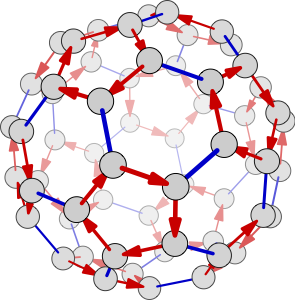Take Home Final!
Write up and hand in the following. All problems will be graded. Please number them as below, not using the textbook problem number or some other number. Type your solutions in $\LaTeX$ where
- On planet Triskelion there are only two kinds of coins, worth 46 quatloos and 26 quatloos respectively. All residents and shopkeepers on the planet have an unlimited number of each type of coin, and only these coins can be used to make purchases.
- What is the set of all possible prices an item can have on Triskelion (assuming it can be purchased for its exact price)? For example, you can purchase an item that costs 20 quatloos by giving one 46 quatloo coin to the vender and getting one 26 quatloo coin back as your change, but you can’t purchase an item that costs 1/2 quatloo because there is no way to pay for it exactly. (Prove your answer.)
- As Triskelion residents are gamesters, Galt is eager to purchase a new Sony PS5, which costs 816 quatloos (hey, do you have any idea how expensive it is to ship a PS5 to Triskelion?). Can he purchase it, and if so how can Galt pay for it? (i.e., how many coins should he and the vendor exchange of each type)? (Explain your answer.)
- If the answer to the previous part is “no”, what is the smallest amount of money he can pay for the PS5 that is more than what it is worth (the vendor doesn’t give discounts). If the answer to the previous part is “yes” what is the least total number of coins that can be exchanged between Galt and the vendor to complete the transaction? (Explain your answer either way.)
- Let $R=\mathbb{Z}_5[x]/(3x^5+x^4+3x+1)$.
- How many elements are in the ring $R$? (Explain.)
- Is $R$ a field? (Prove your answer.)
- Find a monic degree 2 irreducible polynomial in $\mathbb{Z}_5[x]$ whose equivalence class is a zero divisor in $R$. (Prove your answer.)
- Find a monic degree 2 irreducible polynomial in $\mathbb{Z}_5[x]$ whose equivalence class is a unit in $R$ and find its multiplicative inverse. (Prove your answer.)
- Define $f:\mathbb{Z}_5[x]\to R$ by $\forall p\in \mathbb{Z}_5[x], f(p) = [p]$. Prove $f$ is a homomorphism and $R\cong \mathbb{Z}_5[x]/\text{Ker}(f)$.
- Exercise 7.4 #8.
- Exercise 7.4 #18.
- Exercise 7.4 #19.
- Exercise 8.1 #6. Note: $U_{32}$ is what we would call $U\left(\mathbb{Z}_{32}\right)$.
- Exercise 8.1 #10.
- Exercise 8.1 #24.
- Exercise 8.1 #32.
- Exercise 7.5 #25.
